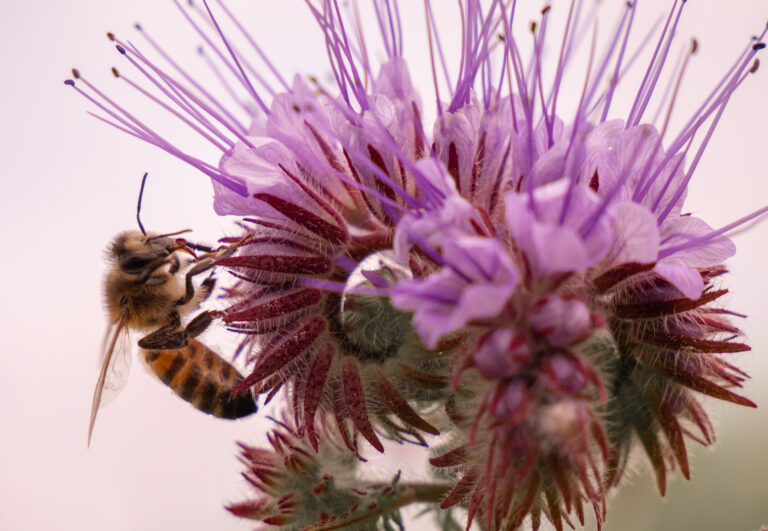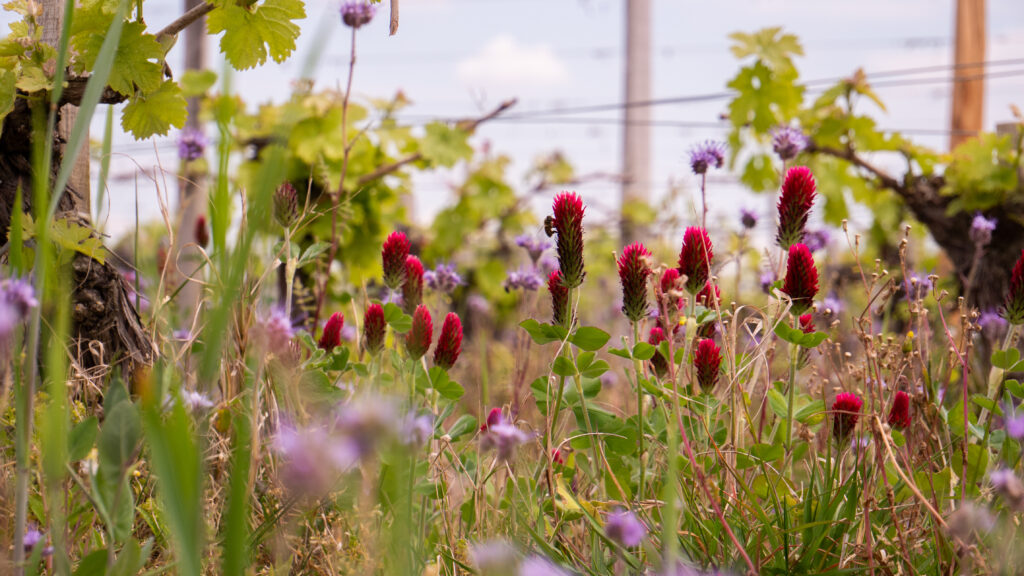We provide grass cover between the rows and use only natural fertilisers at low doses to manage the soil-plant balance using organic materials. Amendments are applied in small doses every spring depending on the type of our soil.
We also make use of plant cover. In the autumn, we prepare the soils for the winter season by ensuring full grass cover between rows of vines.
Combining numerous different varieties of seeds provides the vines with the organic matter they need.
We sow a mixture of grains (rye) and legumes (broad beans, crimson clover…), which provide the nutrients and organic materials that the vine needs.
Nothing is left to chance: we select these mixtures according to each plot’s characteristics and needs.
This plant cover enhances the microbial soil life and biomass: insects (aphids, bees) and flying animals (ladybirds and birds). It becomes a refuge and food source for fauna. However, as well as bringing life and biodiversity to the soils, this is also a way of restoring floral biodiversity.
And plant cover has other benefits!
– It allows nutrients to be supplied 100% naturally, thanks to their binding power and ability to restore nitrogen.
– It develops root systems, helping to aerate and decompact soils but also to improve their structure.
– It limits nutrient loss via run-off, helping to limit the use of inputs and fertilisers. It means that nutrients (nitrogen) no longer disappear into water tables as nitrates are captured in its roots, thus helping to prevent soil depletion.

We have invested in purchasing high-precision equipment for working the vines, preserving the surrounding flora and fauna: a Rolofaca, designed to install plant cover on the soil in late April.
This preserves flora, fauna and microbial life (earthworms) by retaining the existing root network. Plant cover is left to dry in situ and forms a natural mulch over the summer, protecting the vine during the dry season and keeping the soils damp and cool.
This layer of straw offers the soil effective protection against the weather extremes of heat and driving rain, and straw also reflects the light, encouraging earthworm activity.
